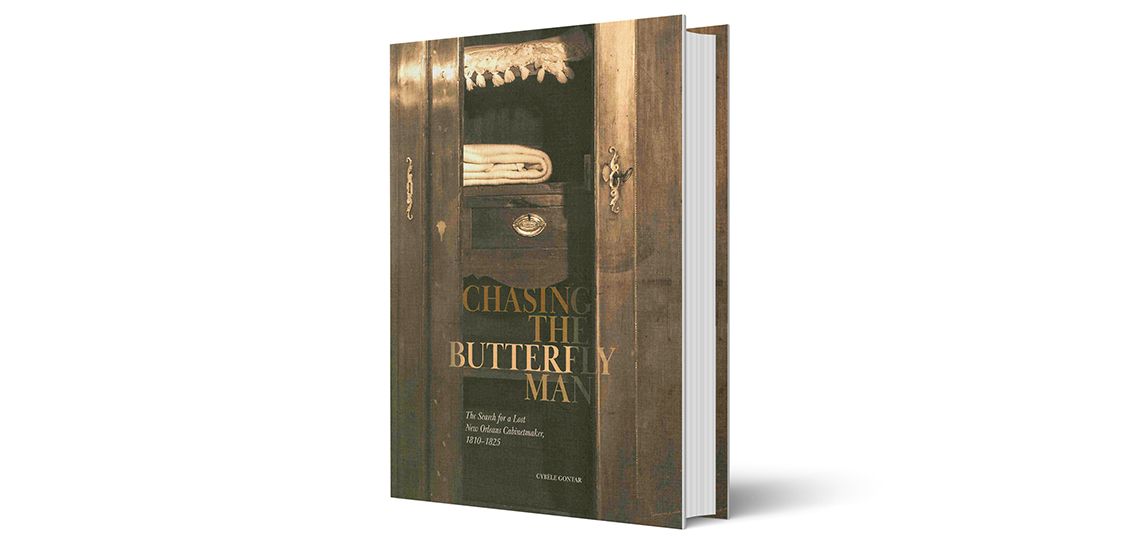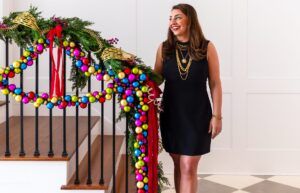Off the page: ‘Chasing the Butterfly Man’
Like any good detective, Cybèle Gontar is always on the hunt for clues. She pores over old papers. Peers into shops. Prods and inquires. But Gontar is no ordinary detective, and this is no run-of-the-mill mystery.
The riddle that this New Orleans art historian is attempting to solve? The identity of an anonymous early 19th-century Crescent City cabinetmaker. Dubbed the “Butterfly Man” for his use of a double dovetail-shaped joint, the unknown artisan was responsible for at least 17 exquisite armoires now held by discerning collectors. But while his work lives on, his name is lost to time.
It was one of those collectors, Jack Holden—whose treasury of Creole furnishings and homes was featured in inRegister’s pages in 2015—who first introduced Gontar to the work of the Butterfly Man. Her intrigue at the intricate details, including elaborate inlay patterns and book-matched door panels, inspired a years-long quest to find the craftsman and give credit where credit was long overdue.
The results of Gontar’s efforts are beautifully laid out in the pages of Chasing the Butterfly Man: The Search for a Lost New Orleans Cabinetmaker, 1810-1825. Published by the Louisiana Museum Foundation and available locally at Rogers & McDaniel at Home, the book first explains the history of the armoire, a term that came into use in the 15th century for a furniture piece that was depicted in art as early as 425 A.D. At the heart of this volume, Gontar outlines the case for each in a long lineup of suspects—from English-born inlay expert George Dewhurst to free man of color Célestin Glapion to French native Etienne Bertel. Finally, the 17 known Butterfly Man armoires are presented in all of their mahogany and cherry wood glory, through a series of photos and detailed descriptions.
“The Butterfly Man simply captivates me,” writes Gontar. “When I walk through the French Quarter, I think to myself the workshop was here, somewhere. In some workshop, on some street, the mahogany panels were cut and the cypress planed. The scallop designs were carefully prepared. And slowly and painstakingly, the bellflowers were cut and laid in.”
Though it stands alone, the book also serves as catalogue for a Butterfly Man exhibition on view at The Cabildo through August 15. The show features eight privately owned Butterfly Man armoires, including one from the collection of Jack and Pat Holden.
So who was the Butterfly Man anyway? Though the list of possible names has been narrowed, no decisive conclusion could be reached. It’s up to each collector, each history enthusiast, to draw their own verdict. The mystery lives on.












